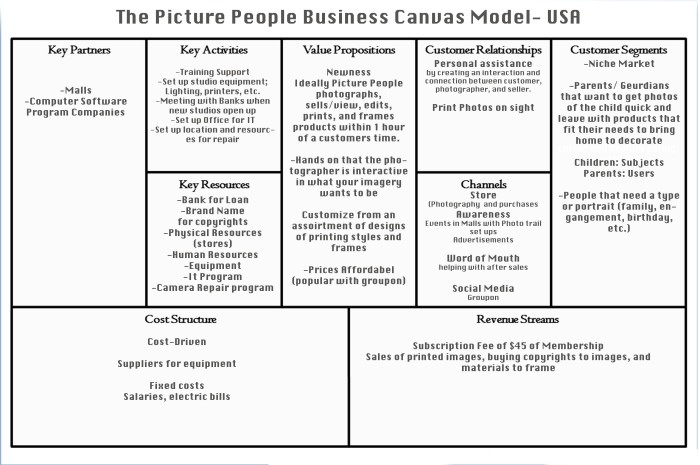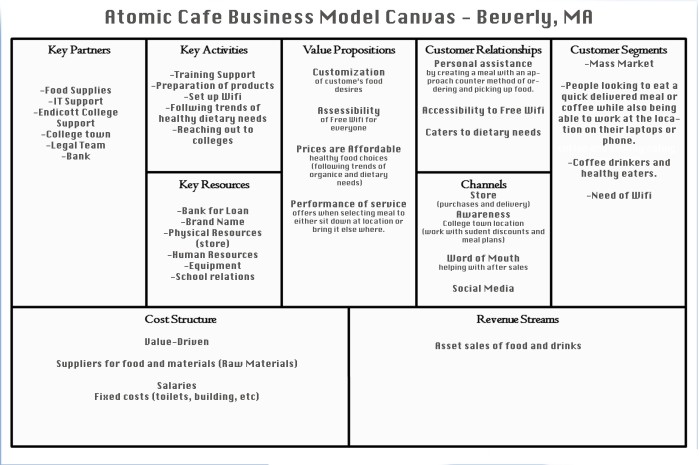With review from class of the canvas model, I followed a company that I worked with that followed my profession as a photographer.
In the USA, a few popular studios on the east coast and down south have made an impactful name in the retail photography business. JC Penny, Sears, Target all have or had a photo studio that children grew up with learning how to get their picture taken. The Picture People is one of the many brand names of family portrait studios. As an employee, I worked with the company for a few years and saw many struggles and flaws in their pivots. As a very strong cost-driven idea, things would be changed to cut down time. Time was everything to the customer and to the owners.
The picture people started out with a similar idea that Eric Ries implies about Dropbox issue with products development, “..if we can provide a superior customer experience, will people give our product a try.” Realizing the studio’s value that would differentiate with other customers would to create a value proposition that the customers would be able to take everything home on the same day. The product itself didn’t need to be anything expensive. Affordability was the key. Having everything done; photos, selecting, editing, printing and framing in one visit was key ingredient to Picture People’s model canvas.
Creating the Business Model Canvas myself as an employee who has observed the ups and downs of the company made me be able to step back to visualize the reasoning behind the actions of the business. The Picture People has failed more times the successes and I never understood why because the idea can be strong. The issues that I noticed while building and observing Picture People was the key partnerships that effect the key resources and activities. Within the company, everyone does everything. At the studios, the managers are required and needed to do everything including; IT work, construction of studio, photographing, customer service, training, etc. The difficulty is that when there is a problem with IT that cannot be fixed until someone arrived from a different state within the company, then the service with the customers is haunted. There needs to be more outsourcing with the development with the company then having everything done within the walls.
This could result in a different cost structure because there might be an a development that there will be an IT guide for each studio, out sourced by another company.
WHAT WE BROUGH TO CLASS
This week we came prepared with having read a couple chapters of The Lean Start Up by Eric Res. This was taken in strides since there were some important concepts that we will be using for the rest of our business careers. When reading each chapter, I felt invigorated to learn about the Build-Measure-Learn loop, Komisar’s Getting to Plan B book focusing on analogs vs antilogs, the courage of pivot and more.
The focus of our class was to practice Business Models. In Alexander Osterwalder and Yves Pigneur’s book Business Model Generation it states that, “A business Model Describes the rationale of how an organization creates, delivers, and captures value”(pg 14). Each of us individually watched The Founder movie, seeing a the well known international business start up. During the movie, I became hooked on the idea when Ray released the idea of finding people that wanted to invest their time and passion into the business as investors instead of just getting money from the rich. This made me think about my home town’s cafe. A very popular cafe called Atomic Cafe that always seems overcrowded. Such curiosity drove me to create and bring to class my first model canvas on this cafe.
I wanted to see the plans of the Atomic Cafe of what their model plan is to create value in their services before I put my thought of how can we improve it and is it worth it.
To alter a change in the model, I focused on the customer issue that the cafe is overcrowded. Many customer, including myself, realized it is because people bring lots of work and hang out at the cafe for hours. Sometimes only ordering a cup of coffee.
I would attempt to limit wifi access. Such as airports limit your time before paying for wifi services, I would recommend implementing Free Wifi limited to either 30minutes or 45minutes before customers have to pay. The company already invests a const structure into the service to get Wifi and it wouldn’t subtract too much from the Value proposition because it does still offer free wifi. This action might take a little bit out of the accessibility because it is not limitless wifi, but does not change the value driven relationship that the company aspires to be. This would also be assumed that it would add to the Revenue Streams because if a customer is willing to pay the extra buck for longer wifi service, then Atomic Cafe would get a profit.
